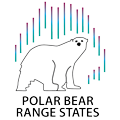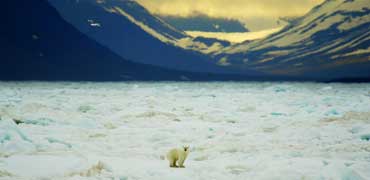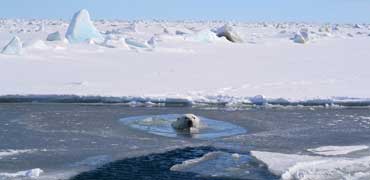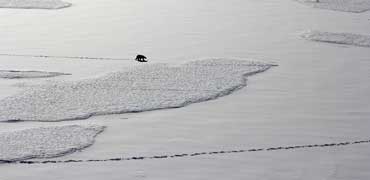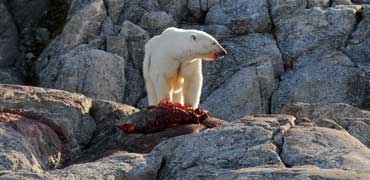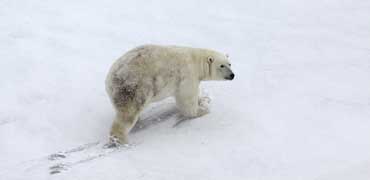 Photo credit: Kristin LaidreThe growth potential of polar bear populations is low compared with that of most other mammals. Most males begin to breed at about eight-to-ten years of age. Females reach reproductive maturity from four-to-six years of age and typically have litters of one or two cubs. If cubs survive, they are (in most areas) weaned in the spring around the age of two years. Once cubs have been weaned, the mother will mate again. This high maternal investment means that female polar bears usually reproduce every three years, or less often, depending on cub survival. Young polar bears are susceptible to intraspecific predation. The species’ low reproductive potential means that populations cannot recover quickly following a population decline. Few polar bears live longer than 25 years in the wild.
Photo credit: Kristin LaidreThe growth potential of polar bear populations is low compared with that of most other mammals. Most males begin to breed at about eight-to-ten years of age. Females reach reproductive maturity from four-to-six years of age and typically have litters of one or two cubs. If cubs survive, they are (in most areas) weaned in the spring around the age of two years. Once cubs have been weaned, the mother will mate again. This high maternal investment means that female polar bears usually reproduce every three years, or less often, depending on cub survival. Young polar bears are susceptible to intraspecific predation. The species’ low reproductive potential means that populations cannot recover quickly following a population decline. Few polar bears live longer than 25 years in the wild.
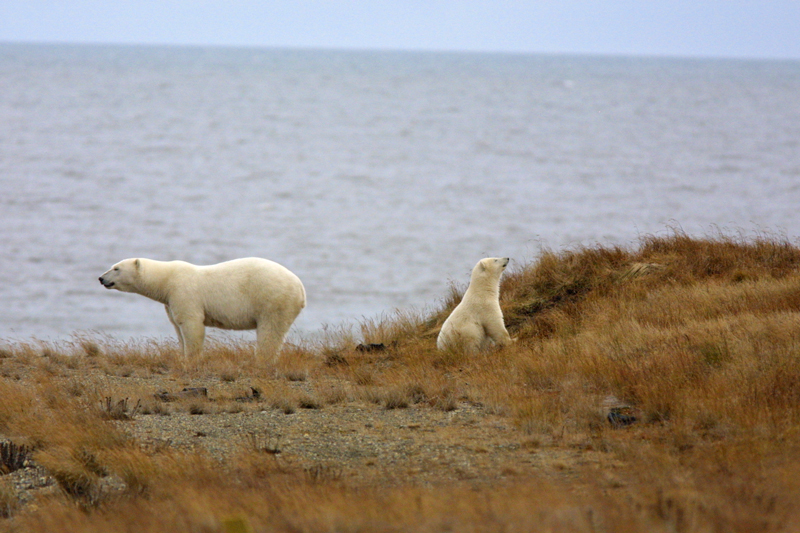 Photo credit: U.S. Fish and Wildlife ServiceMating can occur from late January or early February to the end of June but peaks between early March through April. Implantation of the fertilized egg does not occur until October, and is thought to be dependent on the female’s nutritional condition at that time. Pregnant females enter maternity dens in autumn, and the cubs are born between November and early January. At birth, cubs weigh less than 1 kg and are covered in very fine hair. They are nursed inside the den until sometime between the end of February and late April, when they venture out on the sea ice with their mother. By this time, the cubs weigh about 10 kg. During the months of denning, pregnant females fast. Some females may not eat for up to eight months while required to meet the energy demands of gestation and lactation.
Photo credit: U.S. Fish and Wildlife ServiceMating can occur from late January or early February to the end of June but peaks between early March through April. Implantation of the fertilized egg does not occur until October, and is thought to be dependent on the female’s nutritional condition at that time. Pregnant females enter maternity dens in autumn, and the cubs are born between November and early January. At birth, cubs weigh less than 1 kg and are covered in very fine hair. They are nursed inside the den until sometime between the end of February and late April, when they venture out on the sea ice with their mother. By this time, the cubs weigh about 10 kg. During the months of denning, pregnant females fast. Some females may not eat for up to eight months while required to meet the energy demands of gestation and lactation.
Source: Circumpolar Action Plan
